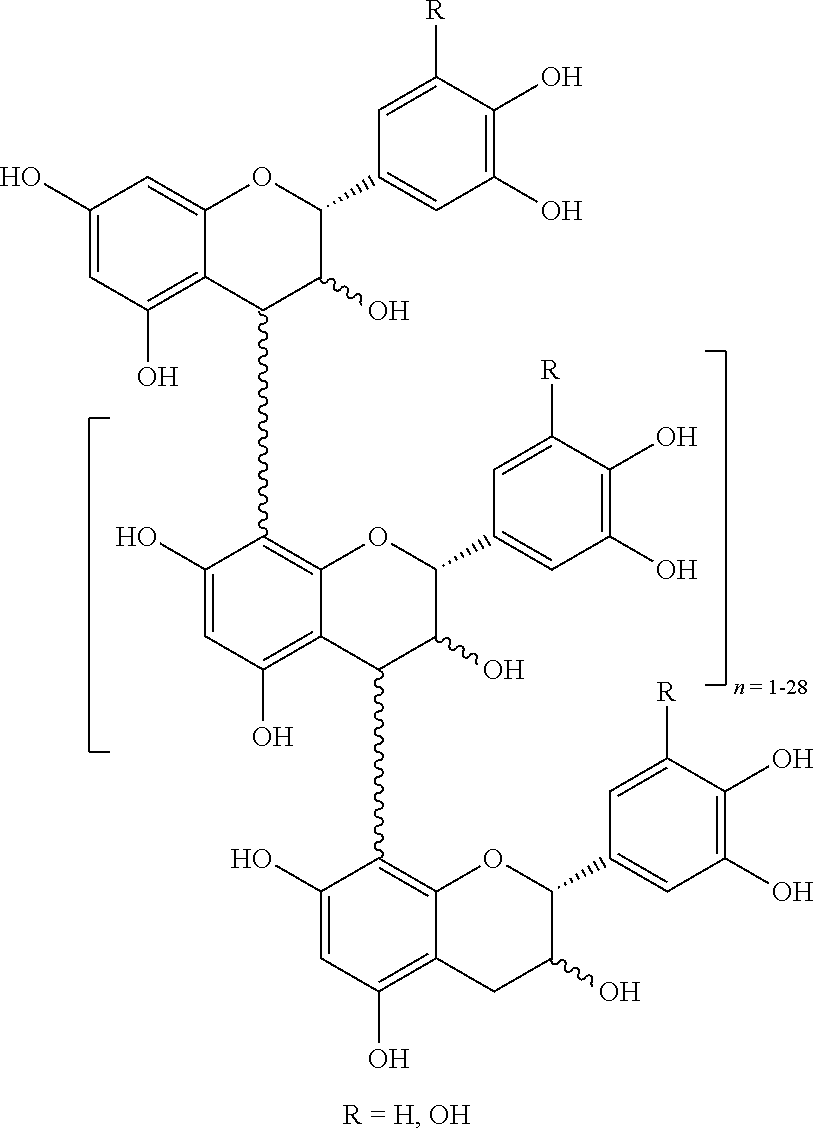Use Of Croton- Or Calophyllum-Derived Proanthocyanidin Polymers Or Botanical Extracts In Combination With Rifaximin For The Treatment Of Diarrhea In Non-Human Animals
- Summary
- Abstract
- Description
- Claims
- Application Information
AI Technical Summary
Benefits of technology
Problems solved by technology
Method used
Image
Examples
example
Example 1
[0119]A representative paste composition comprising enterically coated SB 300 beads for use in the combination therapy with rifaximin according to the present invention is presented in this Example. For administration to animals and as noted hereinabove, the paste containing enteric SB 300 beads may be contained in a syringe. A paste containing enteric coated SB 300 beads may contain the following components:
Component% w / wTheoretical mg / syringeSB 300 enteric beads21.913286.6*Vegetable oil64.429663.5Cetyl alcohol9.761464.2Apple flavor0.0811.7Silicon dioxide2.73410.0Butylated hydroxytoluene0.045.9Titanium dioxide1.05158.1Total100.015000*3286.6 mg SB 300 enteric beads corresponds to 880 mg theoretical SB 300.
Rifaximin may be administered to the animal as a solid dosage form, e.g., 200 mg or 550 mg, in combination with the SB 300 product, or with a C. lechleri proanthocyanidin polymer composition, e.g., SP 303.
PUM
| Property | Measurement | Unit |
|---|---|---|
| Time | aaaaa | aaaaa |
| Time | aaaaa | aaaaa |
| Mass | aaaaa | aaaaa |
Abstract
Description
Claims
Application Information
 Login to View More
Login to View More - R&D
- Intellectual Property
- Life Sciences
- Materials
- Tech Scout
- Unparalleled Data Quality
- Higher Quality Content
- 60% Fewer Hallucinations
Browse by: Latest US Patents, China's latest patents, Technical Efficacy Thesaurus, Application Domain, Technology Topic, Popular Technical Reports.
© 2025 PatSnap. All rights reserved.Legal|Privacy policy|Modern Slavery Act Transparency Statement|Sitemap|About US| Contact US: help@patsnap.com

